Circuit of the Oases 1933
-
Circuit of the Oases 1933
The Circuit of the Oases 1933
The "Second International Aviation Meeting", took place in Egypt from December 19-23, 1933. (The first one had been in 1910, so it was not really a terribly regular event.)
The F.A.I. were aiming to "stimulate an interest in aviation, and to emphasise the advantages presented by the use of aircraft", and the meeting included 3 main competitions:
- "The Circuit of the Oases"; a 2-day touring contest covering about 900 miles;
- a Speed Contest, based on a handicap, over a distance of about 230 miles, and
- the Oases Trophy, which was for a prize for the competitor gaining the highest total of points in the two other contests.
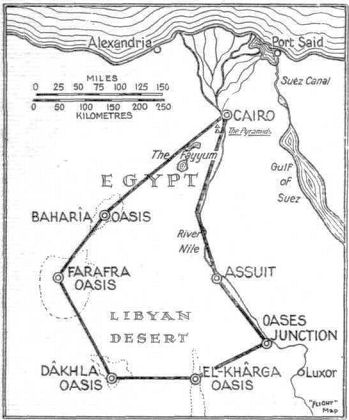
There was a fantastically complicated Handicap Formula, awarding points for (wait for it) fuel consumption, safety (they had to turn the engine off and glide down from 2,000 ft), wing folding (faster = more points), comfort, picketing, take off and landing distances, luggage, engine starting, safety appliances, controls and instruments, refuelling, and (finally) ease of maintenance. It must have taken them hours to assess each aircraft...
Still, not to worry: "The flight south will be easy from a point of navigation, for the blue ribbon of the Nile provides an excellent landmark".
After that, however, "the pilots will have to rely nearly entirely on their compasses, for the Lybian desert provides few landmarks... a forced landing might easily mean minor injuries resulting in many unpleasant hours, perhaps even days, being spent in the desert before help arrived".
The Circuit was supposed to start on the 20th, but "Egypt's weather, which has a name for constancy, decided for this occasion to be thoroughly feminine. It was capricious to a degree previously unknown, and very nearly, so to speak, wrecked the whole party."
Ahem...
Anyway...
At one point there had been 60 entrants, but this had been whittled down to 32 or so by the start of the race.
Out of those 32 starters, just 6 were British:
Race No Aircraft Pilot(s) Crew/Passengers Fate 3 Avro 626 Prefect G-ABYM
Regd: 22.07.33 to Air Service Training Ltd
Scrapped 1939
.jpg)
Flt-Lt R P P Pope plus 1 Pilot was ill ("possibly with what is colloquially known as Gippy Tummy") for the Oases Circuit; 7th in the Speed Race 17 Percival D.2 Gull Four G-ACJW
Regd: 07.09.33
Sold Australia (as VH-UTC) 11.34
.jpg)
Mr Patrick Randolph plus 1 5th in the Oases Circuit 23 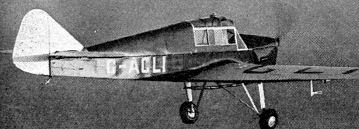
Miles M.2A Hawk Special
G-ACLI
Regd: 18.10.33
Dbf Brooklands 24.10.36
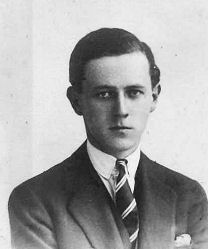
Mr Stephen Bertram Cliff plus 1 Disqualified from the Oases Circuit (aircraft 19kg overweight); 16th in the Speed Race 24 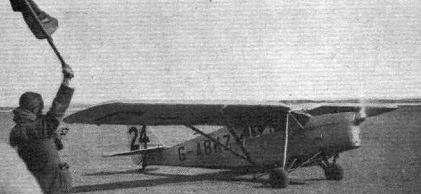
DH.80A Puss Moth
G-ABKZ
Regd: Apr 1931
Impressed 31.5.41 restored
Wfu 18.1.50
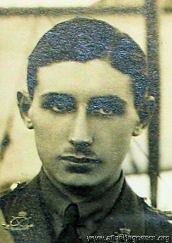
Sqn-Ldr Frank Ormond Soden DFC plus 1 9th in the Oases Circuit; 8th in the Speed Race; 6th overall 29 DH.84 Dragon G-ACKU
Regd: 24.11.33
Impressed 7.7.40 Stalled forced landing nr Wantage 10.2.41
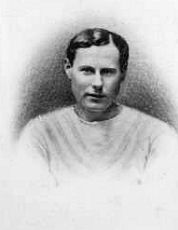
Walter Dugald MacPherson Mr W Lindsay Everard M.P.
plus 4 others
1st in the Oases Circuit; 12th in the Speed Race; 1st overall 31 Percival D.2 Gull Four II G-ACIR
Regd: July 1933
Spun in and burnt Heston 20.2.35
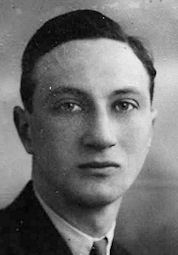
Mr Walter Guy Robson Arrived too late for the Oases Circuit (engine trouble on the way out to Egypt); 13th in the Speed Race on handicap, but did win the Heliopolis Oases Co. prize for fastest Speed (139.9mph) Another 11 Brits entered, but did not start, for one reason or another:
Monospar S.T. 6 Mr R E Gardner the Monospar was not ready in time - he flew his 'Cadet' out anyway, but didn't enter the race. Monospar S.T.4 The Duchess of Bedford Percival Gull Mr N M Gandar D.H. Leopard Moth Sir Pyers Mostyn D.H. Puss Moth Mr M D L Scott Junkers F.13 Mr L Beardmore engine trouble on the way out to Egypt D.H. Puss Moth Mr T A K Aga D.H. Gypsy Moth Peake Pasha Miles Hawk Mr E D Spratt damaged his machine in Switzerland Comper Swift Mr A Henshaw Waco Cabin Lady Hay Drummond-Hay engine trouble on the way out to Egypt ... and the rest of the field was made up of : 16 French, 3 Egyptian, 2 Italians, a couple of Germans, a Jugoslav, a sole Swede and a lone Belgian.
The French aeroplanes drew special comment from Flight regarding their colouring; they "looked more like a flock of African macaws than anything else. Bright and cheerful, it is true, but not artistic."
-
-The Aviators
The Aviators
-
Aga, Tariq Ali Khan
Tariq Ali Khan Aga  photo: 1933, aged 24
photo: 1933, aged 24 -
Cliff, Stephen Bertram
Mr Stephen Bertram Cliff  1929, Royal Naval College, Greenwich
1929, Royal Naval College, Greenwichb. 26 Oct 1907, Greetwell, Lincoln
Joined the Royal Navy 15 June 1925, Midshipman 1926, Acting Sub-Lieut from 1 Jan 1929
25 Jan 1929 - "Wants Fleet Air Arm!"
Resigned from RN 1 Sep 1929 and applied to the RAF the following year.
Post-WWII, a pilot for British South American Airways
-
Henshaw, Alexander Adolphus Dumfries
Mr Alexander Adolphus Dumfries Henshaw 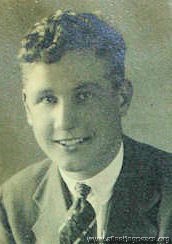 1932, aged 20
1932, aged 20b. 7th November, 1912.
The extraordinary Mr Spitfire. Leant to fly in (of all places) Skegness. "After 25 hours solo bought a Comper Swift and in the 1933 King's Cup Race won the Siddley Trophy with it." In 1936, still the youngest competitor in the race.
d. 24th February, 2007
-
MacPherson, Walter Dugald
Walter Dugald MacPherson 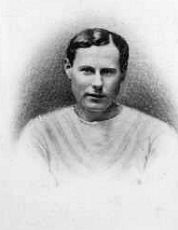
b. 30 Jun 1901 in London
a solicitor
d. 1991
-
Pope, R P P
Flt-Lt R P P Pope 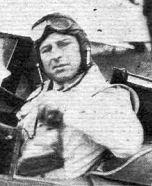
Chief Instructor with Air Service Training
-
Randolph, Patrick
Lt Patrick Randolph  1933, when 2nd Lieut in the Grenadier Guards, aged 20.
1933, when 2nd Lieut in the Grenadier Guards, aged 20..jpg) in 1936
in 1936b 25 Jan 1912 in Chelsea, London.
His parents (American-born Arthur Bertram Randolph and Enid Saffron Pickersgill-Cunliffe) had made the society pages when they had a 'best girl' as well as a best man at their wedding in 1908.
However, his father was killed in WWI, his mother remarried (becoming Saffron Duberly, and 'lady of the manor' in St Neots) and in 1924 she and Mr Duberly sailed off to Jamaica, leaving the 12-year-old Patrick to go with his aunt Adelaide to the USA, presumably to visit family (his grandfather Arthur Randolph Randolph had emigrated and died there in 1885).
It seems that Patrick subsequently lived with his aunt Adelaide and her husband Lionel in Dorset - he always quoted their address as his own, and again visited the USA with her in 1935.
In December of 1933, he and fellow-officer Capt Goschen flew (in Pat's Percival Gull) to Egypt to take up an appointment at the Flying School for 2 years. Whilst there, he took part in the 'Oases Circuit Air Race' along with 31 others from Britain, France, Germany, Italy, Jugoslavia, Sweden and Belgium.
He "sportingly flew up for the race round the Isle of Man in 1936 during 48 hours leave and flew back the same night".
He took part in several other races, e.g. the Folkestone Air Trophy in August 1933; the London-Cardiff Race in 1936, and the Manx Air Race in June 1937. He entered for the Schlesinger Race in 1936 (as co-pilot to Lt Misri Chand) but the aeroplane wasn't ready in time.
He owned 4 aeroplanes:
- G-AACV, a 1928 Avro Avian IVM;
- G-ACJW, a 1933 Percival Gull which was sold in Australia in 1934 and became VH-UTC;
- G-ACUL, a 1934 Gull Six (sold in New Zealand, becoming ZK-AES), and finally
- G-AEKD, a 1936 Vega Gull.
It was this aircraft in which he was killed in a crash in Jaipur, India on 12 October 1937, aged 25. P Q Reiss (q.v) was also seriously injured in the same accident.
A few weeks before his death, he and his uncle-in-law Lionel had been the joint executors for the will of his father's half-brother, Judge Joseph Randolph J.P., selling Eastcourt Estate ('A Georgian house with 484 acres, garages, stabling, and 9 cottages').
(His mother Saffron's son by her second marriage was also killed, in WWII. Her second husband died in 1951; she herself died in 1980).
-
Scott, Michael David Llewellyn
Mr Michael David Llewellyn Scott 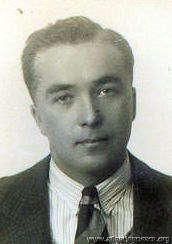 1930, aged 24
1930, aged 24b. 12 Sep 1906 in Eton, Bucks.
B.A. Cantab. and an 'Old Uppinghamian'. In 1930, a solicitor from Stoke Poges, if you hadn't already guessed :-), and, for a while, v. famous in the Skegness area...
In 1930, after competing in the King's Cup, he crashed near Skegness when the wheels of his D.H.60X Moth G-EBXG caught a wire fence. He jumped clear, but his mechanic (Howard), who was still strapped in, was 'injured about the head'.
May 1932, he had a terrifying ordeal (a bit like General and Mrs Lewin in the Sudan swamps, but even worse) in the remote reaches of The Wash; "CRIPPLED 'PLANE ON SANDBANK SET ON FIRE TO ATTRACT ATTENTION - HULL TRADER TO RESCUE"
"Captain (sic) M. D. L. Scott, secretary of the Skegness Aero Club, was flying with a passenger named Tingall, from Skegness to Hunstanton, when his 'plane developed engine trouble. They were about halfway across the Wash, and he was compelled to a make forced landing on a sandbank which was uncovered, as it was low tide... they made an effort to swim the five miles to shore, but the current proved too strong. They then tried to attract attention by setting fire to the 'plane. Later the flames were noticed by a small cargo boat named Lizzie and Annie, which came alongside and took Captain Scott and his passenger on board. "
Only just in time, too - the tide was rising fast... only the engine of the aeroplane remained unburnt... Gosh!
By 1933, he was offering to take sun-starved midlanders to be braced up a bit in Skegness; 25 bob return from Nottingham or Leicester, 35 shillings from Birmingham: "Nottingham people will be able to fly to Skegness again this summer at fares which will actually be cheaper than the first-class railway rates. This enterprising venture, which was inaugurated last year, is to be resumed again at Easter on a very much bigger scale... The service is to be conducted Mr. M. D. L. Scott, of Eastern Air Services, Skegness".
The Eastern Air Transport Company carried 30,000 passengers in the 4 years to 1933 without serious incident.
In November 1934, the Western Daily Press reported thus: "FOUND: AN AEROPLANE. A police constable, while on duty in Pinner, Middlesex, yesterday, found a monoplane in a field. No one seemed to know how the monoplane got there, and the constable began to make inquiries. The machine appeared to be a privately owned one, and was in good condition save for some slight damage to the undercarriage. The monoplane bore the marks G-AAPY and inscribed inside the fuselage was the name "M. D. L. Scott, Skegness." Further inquiries by the officer among the farm hands and the owner of the farm, Mr Hall, showed that someone saw an aeroplane land in a field on Wednesday afternoon. From that time until the constable discovered it yesterday it has been completely unattended, and, far as the police know, unclaimed. A Mr L. Scott, an airman, operates a private aerodrome and club at Winthorpe, a mile or so from Skegness. Pinner police were last night in communication with the police at Skegness."
[G-AAPY was a Desoutter I, belonging to Michael. It was, indeed, written off in November 1934.)
He then turned to golf in the late 30s - winner of the 'Witt Cup' in 1938.
Married firstly to Marguerite; their son, Roderick, was born in December 1943. By then, he was a Flt-Lt (RAF Volunteer Reserve) in Oxford.
However, by 1948, when he married Miss Patricia Collette Thomas (from Bude, Cornwall) in Zurich, they lived at 400 East 57th St, New York.
Describing himself as a 'Sales Manager', he travelled (first class) from Durban to Southampton in February 1959, intending to stay a couple of months with the Duke of Somerset, Maiden Bradley, Wiltshire. Like you do.
-
Soden, Frank Ormond
Flt-Lt Frank Ormond 'Mongoose' Soden DFC  1916, when a Lieutenant in the 8th South Staffordshire Regiment, aged 21
1916, when a Lieutenant in the 8th South Staffordshire Regiment, aged 21b. 3 Nov 1895, Petitcodiac NB, Canada
British Army 1914-16; RAF 1916-1945; WWI ace (27 victories)
Founding Member of the British Parachute Association in 1926
Author of 'Parachutes' (RAeS), Oct 1927
2nd place (Moth G-EBOU, 95½ mph) in Wakefield Light Aeroplane Handicap (£15) & 2nd place (Moth G-EBOU, 95 mph) in President's Cup Race (£15), Hants Air Pageant, Avro Aerodrome, Hamble, 28 May 1928
Station Commander at Biggin Hill in WWII
Later emigrated to Kenya
d. 12 Feb 1961 - London
Research: thanks to Steve Brew
-
Tribe, Mary du Caurroy (The Duchess of Bedford)
Mary du Caurroy Tribe, Duchess of Bedford
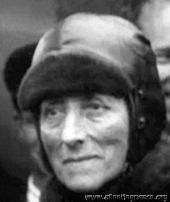
b. Mary du Caurroy Tribe in 1865 in Stockbridge Hants, the second daughter of the Rev. W H Tribe; he later became Archdeacon of Lahore and (after growing up in Sussex, where she and her elder sister Zoe were looked after by their uncle and aunt), she lived there for several years. It was in Lahore that she met, and married, Lord Herbrand Russell, who in 1888 became the 11th Duke of Bedford. She was probably best known as an aviator, but had several other strings to her bow; she was a member of the Society of Radiographers, and was "interested in natural history, especially ornithology". To prove this, she once shot 200 pheasants in a day and (although presumably not the same day) caught 18 salmon weighing 200lb.
Actually, she wrote scientific papers on ornithology, and was a member of the British Ornitholgists' Union.
She was deaf (I'm not sure if this was always true, or if it developed later on in life).
During WWI, Woburn Abbey was turned into a hospital and every morning the Duchess would "go on duty at 5 or 6am, and in her nurse's dress would assist at nearly every operation." The King was pleased to award her the 'Royal Red Cross, in recognition of her valuable nursing services', in Jan 1918.
Her personal pilots included C D Barnard, James Allen and (from 1934) R C Preston, but she herself learned to fly in 1933.
Dame Mary from 1928.
She owned:
a 1927 DH.60X Moth, G-EBRI;
the 1927 Fokker F.VIIa, G-EBTS, 'The Spider', in which she broke the England-Cape Town record in 1930;
a 1928 DH.60G Gipsy Moth (G-AAAO);
later she owned
a 1931 DH.80A Puss Moth, G-ABOC, later sold in Kenya,
a 1932 DH.60G Gipsy Moth, G-ABXR,
a 1933 GAL ST.4 Monospar 2 G-ACKT, registered in October, in which her personal pilot, James Bernard Allen, was killed in December 1933, and finally
a 1934 D.H.60G Moth G-ACUR in which she flew out over the North Sea in March 1937...
... and disappeared.

